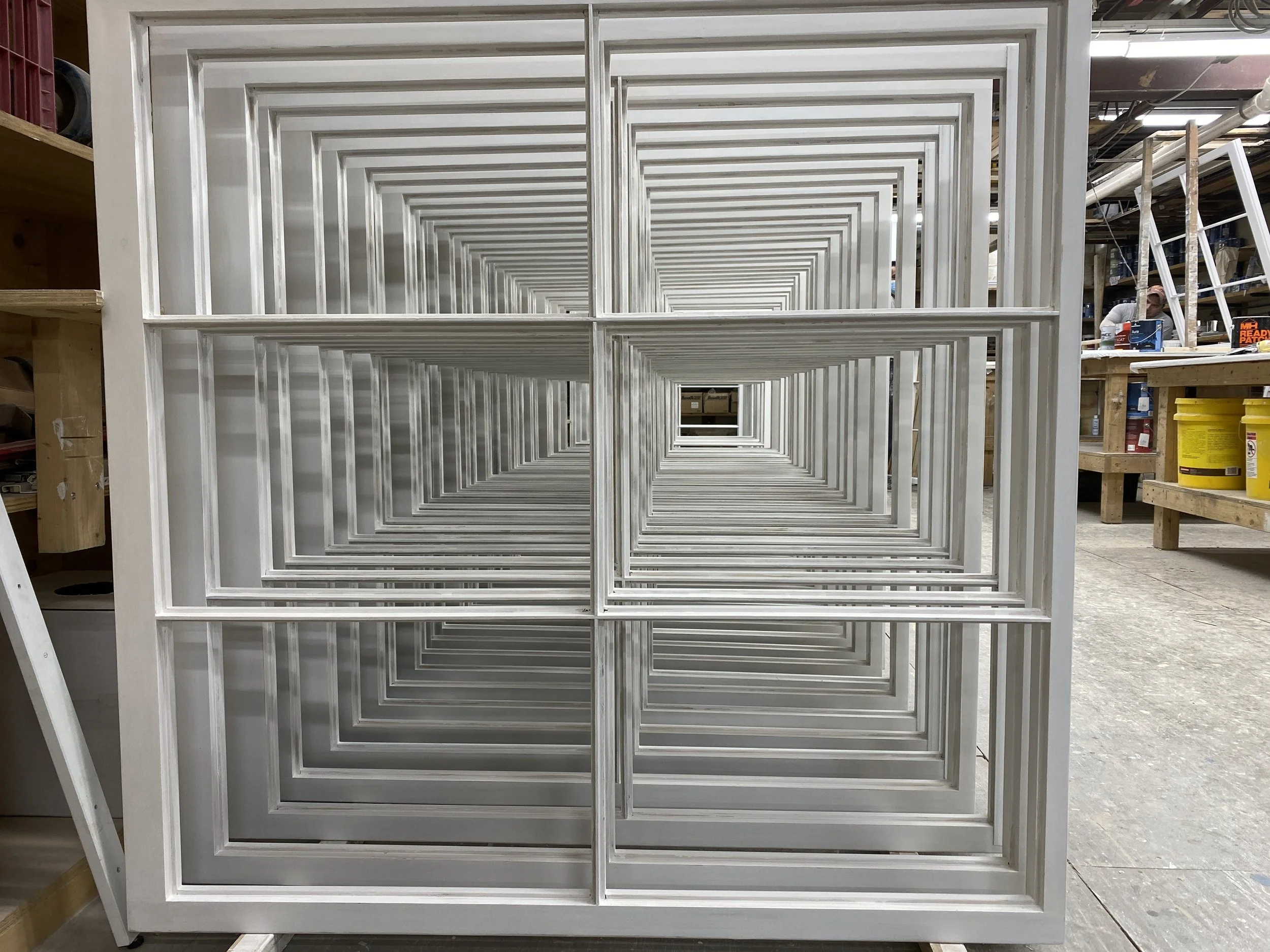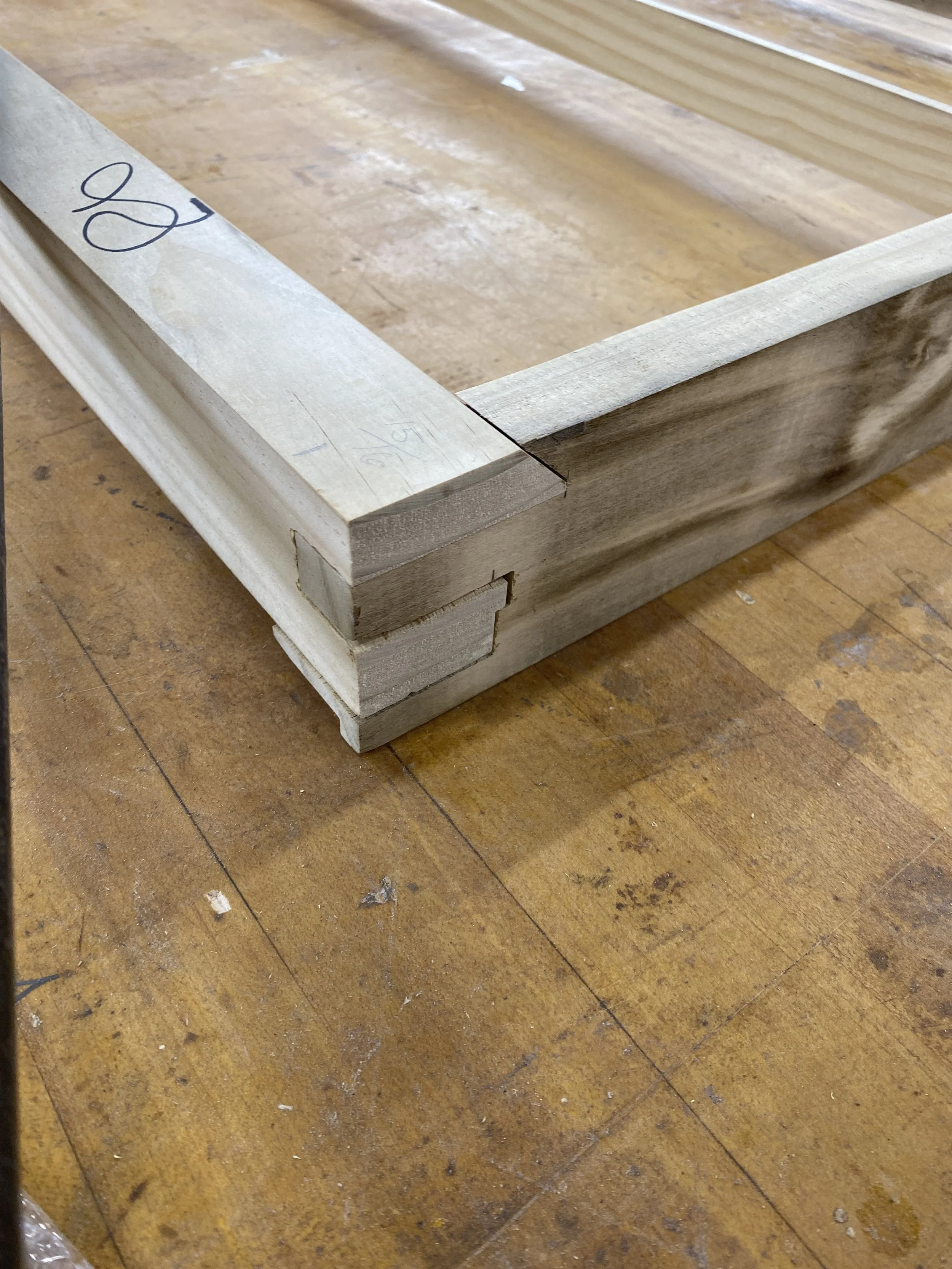ACCOYA WOOD
I remember cutting my first piece of genuine Mahogany in 1981. I was using a Sears table saw with a new fancy carbide blade. Honored, naive, and about penniless, I finished the cut and then the drop piece moved. It twisted enough to require it to be straightened again. All I had were hand planes and a table saw — I couldn’t just move the piece to the fence and cut again. Mahogany trees are large and are naturally grown. These trees contain internal tension that comes out when cut. Predicting which boards would move and how much layered another discipline on to this craft. One I had not known of nor really knew the best way to deal with. All woods have propensity to do this to varying degrees. Accoya is the exception.
Grown on farms where branch size and position are controlled, the Accoya is “stable off the saw” like no other species.
Controlling trees as a crop has provided much more efficient use of land and wood. Forestry as a science has helped the cost of wood products come down. While the treatment process is costly, the long-term added value of the Accoya is multiplied over decades, even centuries.
-
Does not impact natural forests and wildlife.
Controlled tree size and shape for highly effective yield.
-
The acetylation process modifies the wood’s cell structure, replacing water-attracting hydroxyl groups with water-repelling acetyl groups. This change dramatically reduces the wood’s ability to absorb water, preventing the swelling, shrinking, and rot that result from capillary action in regular wood.
The acetylation process makes the wood indigestible to microorganisms. Even at the surface, decay does not generate.
-
Excellent flatness and stability of the cut Accoya makes precision fabrication more predictably attained.
REPRODUCTION WINDOWS IN ACCOYA
Two projects are featured in the attached photos. Lewis Powell Courthouse, the oldest federal courthouse still in use in America, and the Old Bank of Alexandria, the bank to Thomas Jefferson in the early 19th century. Most regrettably, all the original sash had been lost and replaced with window sash of inferior material and construction made in the 1980’s and 1990’s of farm grown pine. They began to decay in two decades. Even when well painted, decay can occur behind the paint film by capillary action, and the paint actually protects the bacteria from the sun.
The power of Accoya came through in both projects. We cut traditional profiles and proportions for the sash components. At the Old Bank of Alexandria, the muntin is bull-nosed, a shape whose genesis comes from the use of hand tools. At the Courthouse, we made a three piece muntin to capture the insulating glass without loose sticking or glazing putty.
These Accoya sash reproductions may last hundreds of years like the originals from naturally grown timbers and maybe longer.

Farm grown, the Accoya arrives straight, flat, and all boards to a given width.

Window stiles for the 225 year old Bank of Alexandria. An excellent project to employ Accoya where we reproduced over 100 sash all with pre-industrial revolutionary joinery.

The softer Accoya cuts muntins of this quality in a single pass of a 1 inch diameter router bit.

This Accoya muntin is cut with extended tenons as would have been done by good sash makers through 1850. This technique has the muntin contribute to the structure of the window sash. Here the tenon is pegged with an mahogany dowel. We haven't found Accoya dowels yet.

Note the very clean joint cuts produced in the Accoya. These sash parts are made just as the would have been made by hand in 1790.

Accoya sash assembly in the final stages.

Sapele mahogany from Central Africa is naturally enduring on par with the first growth north eastern white pine in America. We have used it for decades and yet the Accoya excels in two areas: 1) Sapele is significantly harder than Accoya, making machining more work. 2) Sapele is also more dense, making repairs like this 225 year old white pine less than ideal because of the differing densities.

As we transition to exclusive use of Accoya in repairing historic sash, we still use the sapele mahogany. Someone in 100 years or more will find these three different species of wood in this sash and wonder what the heck is going on.

These Accoya sash are 2.25" thick in order to accommodate modern insulating glass for a modernization at the Lewis Powell Federal Courthouse in Richmond, VA.

Stability of the Accoya contributed to the efficient production of these 10 foot tall wood casement sash.

Every one of these Accoya sash is completely flat. There are no laminations and no finger joints, just sound structural joinery and stable solid wood.

Accoya sash ready for the Old Bank of Alexandria. Folks chose to use modern laminated glass since no historic glass remained.

Sash joinery in the Accoya is more trouble free, less strain on machinery and very little tear out.

These double hung sash for the Lewis Powell Federal Courthouse in Richmond are 2.25" thick as well. This added strength and depth to the sash so it could accommodate thicker insulating glass while maintaining historic profiles.

No one would say the Accoya is as beautiful as the sapele mahogany. I will say that I am grateful that despite the material's resistance to capillary action, authentic oil stain penetrates sufficiently and bonds to create the finish you see here.

These are stain mockups for the Lewis Powell Courthouse. We were able to control undertones and successfully match the existing courtroom finishes.

Here we see the use of the great Tightbond II. Even with Accoya's resistance to capillary action, we found the bond strength to be appropriate for this sash work.

This is 3M's polyurethane glue at work. The glue expands and does not get as hard as the Tightbond. Cleanup is more difficult but the bond seems to be somewhat better than aliphatic resin glues.

Another good display of Accoya's stability. Not a twist or bow in a single piece.

Note the thick growth rings, this means the productivity of the Accoya farms occurs at a rate much greater than trees in their natural habitat. Despite the board cut being at varied angles to the growth rings, these parts are as flat and stable as one might expect from quartersawn material.
